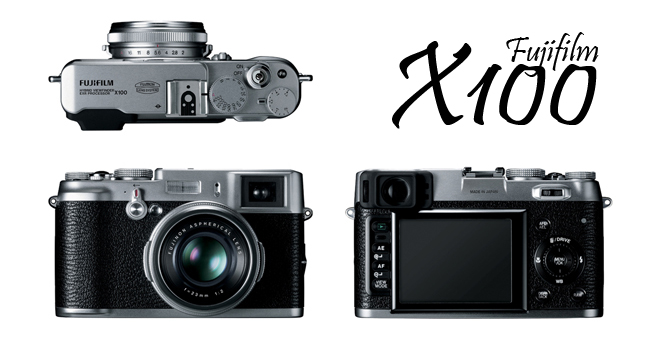3rd Feb 2011
2nd Feb 2011
Back To The Future

I've been on the lookout for a walkaround camera to replace my Canon G9 and although I like a lot of the micro four thirds cameras out there, like the Lumix GF2, Olympus Pen series and the Sony NEX-5, there is one big problem with all of them...no viewfinder. In my opinion, a camera should be held up to your eye and not at arms length and I also think that the micro four thirds manufactures have made a huge mistake in leaving out one of the most important parts of a camera.
The Fujifilm X100 looks like being a compact(ish) camera that has been designed with the serious photographer in mind. Fuji has listened to what people have been asking for. The X100 has an APS-C CMOS sensor, which is the same size you would find in most DSLR's. The Lens is a 23mm (35mm in the real world) f2 that is fixed to the body and can't be changed. This has been the biggest criticism on the web and a lot of people say that it should have been an interchangeable system. I would have been nice to have had two or three prime lens's to swap around on this body, but Fuji's main objective with this camera has been picture quality above all else. By going for the fixed lens approach, they have been able to match the lens, sensor and the new EXR processor to get rid of fall off on the edges of the frame and get a sharp high resolution image.
The viewfinder is probably the most hyped part of this camera. It's a hybrid affair (The worlds first I think), which can be changed from optical to a 1,440,000 dot LCD electronic viewfinder by flicking the lever at the right index finger position. The LCD option has shooting information and can be used to preview images you have already shot.
One of my first camera experiences was using my dad's Rollei 35 (that I blagged off him and I still have 30 years on), which has that same silver and leather effect finish and is a solid and well made piece of kit. Although the X100 is hi-tech under the hood, it defiantly has that retro look from the 60's and 70's and Fuji has gone back to the craftsmanship of that era by using beautifully machined metal parts. Just take a look at the tiny pyramids on the side of the shutter speed and compensation dials.
This camera looks like a great piece of kit for those of us that fancy the Leica M8 or M9, but don't want to sell a kidney to be able to buy one. I personally don't mind the fixed lens if the trade of is to have great quality. I really hope Fuji have also paid attention to getting low noise at hight ISO. Who knows, this might lead the way to bring back the viewfinder in a lot more compact cameras. TO BE CONTINUED...

